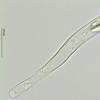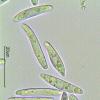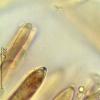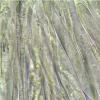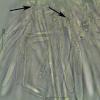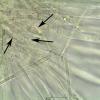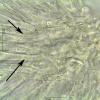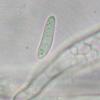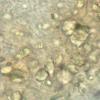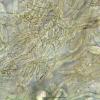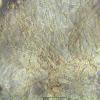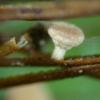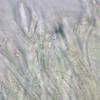
08-12-2015 22:26
 Rubén Martínez-Gil
Rubén Martínez-Gil
Hola a todos. Subo unas fotos de un asco que he e

08-01-2016 23:22
 Bernard CLESSE
Bernard CLESSE
Bonsoir à tous,Suite de mes récoltes sur renoué

07-01-2016 22:59
 Bernard CLESSE
Bernard CLESSE
Suite de mes observations sur tiges pourries de re

08-01-2016 11:37
 Blasco Rafael
Blasco Rafael
Hola despues de Revisar this mañana Los Trozos de

08-01-2016 07:40
 Blasco Rafael
Blasco Rafael
Hola, alguna idea sobre que puede ser esta muestra

06-01-2016 14:18
Gilbert MOYNEAdgelo Mombert que certains de vous connaissent à

05-01-2016 23:05
Nick AplinSalut à tous,I'm having trouble placing this spe

Hola a todos.
Subo unas fotos de un asco que he encontrado hoy sobre musgos.
Miden hasta 2 mm de diámetro. Tienen exterior cubierto de pelos hialinos.
Esporas muy variables en largura, de 16-28 x 3,5-4,5 micras.
No vistos croziers con claridad. Ascas amiloides.
Pensé en una especie de Bryoscyphus, ¿Qué les parece?
Gracias por su ayuda.
Rubén

Clearly the croziers are absent, and this was also seen in samples by Bernard Clesse and JP Priou. I see some resemblance to Arachnoscypha, but this is only a faint idea.
Zotto

Hi Ruben,
Nice collection and nice photos. I agree with Zotto, of course as to the identification of B. turbinatus . DId you also observe crystals in the Excipulum ?
In the collection I had the opportunity to study last year, I had noticed hardly visible croziers.
Amitiés Michel

Hola Zotto, Michel, gracias por su ayuda.
Subo más fotos de base de ascas, aunque yo creo que no tiene croziers. A veces parece que sí, pero creo que sea formación de nueva asca, no un crozier. No se, es mi opinión, yo he visto pocas veces esto, así que os pongo fotos.
Michel, no he visto o no me ha llamado la atención la presencia de cristales en excípulo. ¿cómo deberían ser?
Saludos
Rubén

I never saw crystals in this species. Whjere did you see them, outside the apos?
But I was surpsized to see warted hair-like structures in Ruben's fungus. A warted subiculum woul dbe typical of Arachnopeziza and -scypha.


Torsten Richter offers to examine the host of this collection, to identify the moss. Or do you have an idea what it is? He would need a portion, however, best including a sporogone.
Zotto

here it is:
Torsten Richter
Forstweg 26
D-19217 Rehna
Germany



Hola Zotto.
¿Sabe si recibió y analizó Torsten Richter las muestras de musgo?
Yo envié hace tiempo la muestra.
Gracias
Rubén

Torsten got your moss on Tuesday and will look at it at the weekend. He would like to know the substrate, which kind of soil. Also he would appreciate your photos of the moss.
When you send me those I will forward him and translate.
Zotto

Hola Zotto.
Le envío fotos a su correo privado sin reducir.
También datos.
Gracias
Rubén

Torsten just wrote me, "it is Rhytidiadelphus triquetrus. Not to confuse with squarrosus which is very common."
He assumes that he can keep this portion (?).
Zotto

Sí,
muchas gracias por la ayuda prestada para la determinación del musgo, Torsten.
Gracias también a usted, Zotto, por su ayuda en la determinación y por ponernos en contacto con Torsten.
Saludos
Rubén



